Menu
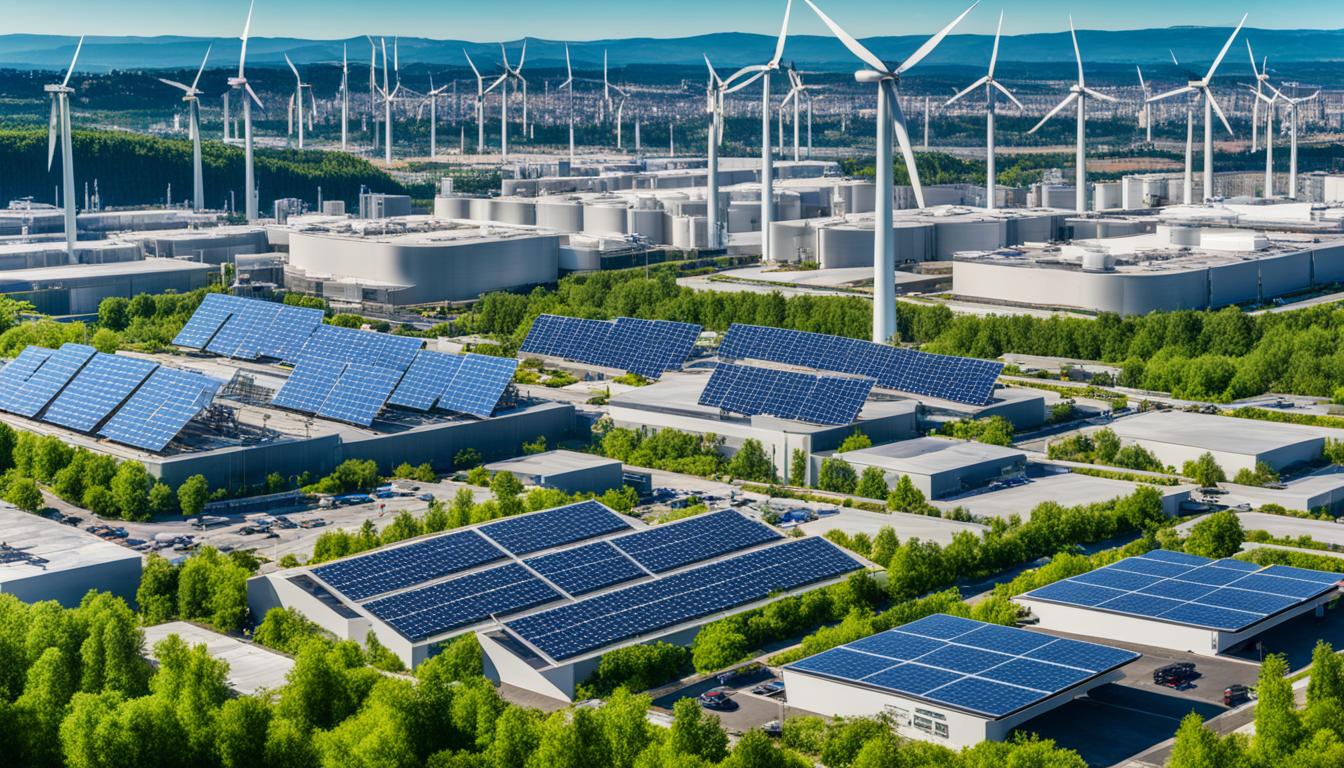
Did you know over 150 projects will be featured at the Carbon Management Technology Showcase (CMTS)? This event will run from August 28 to 30 in Pittsburgh. It’s a key meeting for those involved in new carbon tech.
The CMTS focuses on tech aiming to reduce harmful emissions and our carbon footprint. You can learn about Point Source Capture, Carbon Dioxide Removal, and more. It’s a great chance to see the latest sustainable innovations.
Big companies like Apollodyne and Battelle, as well as startups and labs, will share their work. They will also get advice from experts on managing carbon better.
The National Carbon Capture Center (NCCC) leads in carbon capture research and creating innovative carbon management solutions. This is the principal research site for the U.S. Department of Energy. It helps bring new ideas from the lab to the real world. This is key for lowering greenhouse gas emissions.
Since the beginning, the NCCC has tested over 80 different technologies for more than 150,000 hours. They work on ways to capture carbon from sources like natural gas plants, turning it into useful products. They also look at taking carbon directly from the air, making sure these methods are ready for the big scale.
Chevron recently joined forces with the NCCC, broadening its partnerships. Together, they focus on practical applications of innovative carbon management solutions. This work is important to keep making progress.
The NCCC’s recent partnership with UCLA aims to improve concrete, a major building material. They want to make it almost free of carbon. This would help in making buildings that don’t add much to greenhouse gas emissions.
Financial help for these projects has increased. This is thanks to groups like the Carbon Capture Coalition pushing for improvements. The support from laws like the 2018 FUTURE Act and 2020 Energy Act has been significant. They ensure money goes into critical research and projects.
Key to the future, the 45Q tax credit updates are very promising. They could greatly boost the U.S.’s ability to manage carbon. This could lead to reducing a huge amount of carbon emissions every year by 2035.
Recent laws have also started funding to build the infrastructure for transporting and storing CO2. This is crucial for the growth of carbon capture research and using innovative carbon management solutions widely.
In conclusion, with the NCCC’s hard work and strong support from the government and companies, the field of carbon management is growing fast. This could help fight climate change while creating new ways for our economy to be sustainable.
There are big changes in how we manage carbon thanks to new technologies. Both gas-powered plants and industries can cut their emissions. They are getting a lot of support and money to develop these new methods.
The U.S. Department of Energy (DOE) is pushing ahead with new tech for carbon capture. They’re investing in improving how we capture carbon and use it better. This can help us go from lab ideas to making a real difference.
Honeywell is a standout, aiming for no more carbon by 2035. They’re using a method that now catches 15 million tonnes of CO2 each year. When looking at projects everywhere, this number goes up to 40 million tonnes.
At UT Austin, they’ve made a system that’s better and cheaper at capturing carbon. This kind of innovation means more hard-to-clean industries can join in. They are joined by steel, cement, and chemical makers.
These techs are already making a difference in big projects and with key companies. Honeywell’s method, for example, could take out as much CO2 as 735,000 cars would in a year. The International Energy Agency thinks we need to get more than 20 times better at this to really help by 2030.
The DOE has been at this since 2001, aiming to capture CO2 at a rate of 95% or better. They’re already using these methods in many places, like cement and steel plants. This shows how these techs can be used in many places to help.
Here’s what the DOE plans to spend and achieve with its carbon capture projects:
| Funding Initiative | Amount | Application |
|---|---|---|
| Carbon Conversion and Highly Efficient CO2 Capture Technologies | $30 million | General carbon capture advancements |
| Large-Scale Pilot Projects | $304 million | Projects in Kentucky, Mississippi, Texas, and Wyoming |
| Demonstration Projects | Up to $890 million | Projects in California, North Dakota, and Texas |
| Carbon Transport and Storage Industry | $45.6 million | Support for nine projects in the U.S. |
Carbon dioxide removal (CDR) is key for fighting climate change. It uses natural and man-made ways. Mankind has let out over 2,000 gigatons of carbon dioxide in the air since the Industrial Revolution. So, coming up with new ways to handle carbon is very urgent.
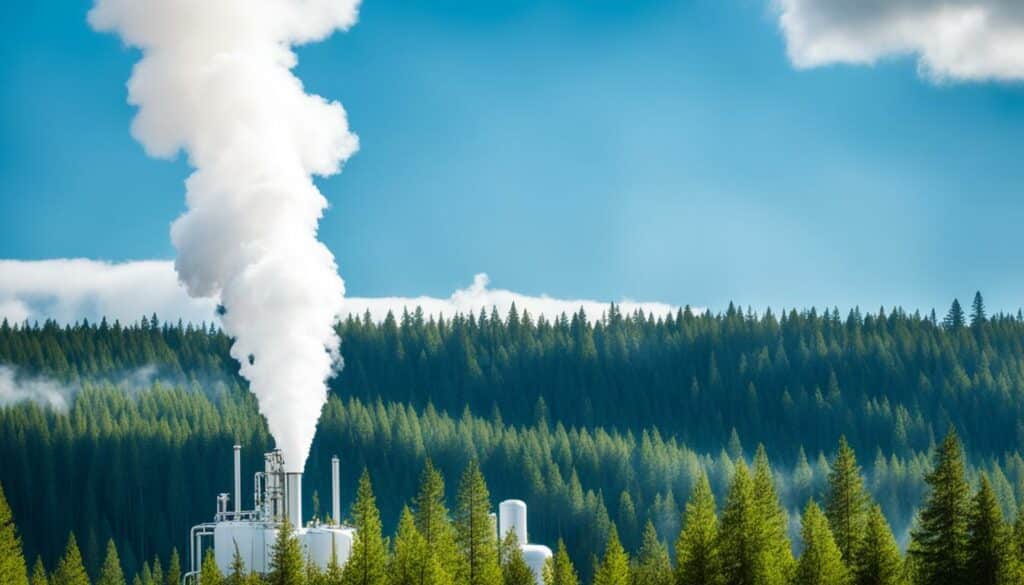
Experts say we need to remove 5 to 16 billion metric tons of carbon dioxide yearly by 2050. This is a huge goal. Just to give you an idea, the US produced more than 6 billion metric tons of greenhouse gases in 2021. Now, let’s look at how we can do carbon removal – through nature and through man-made ways.
Biological methods use natural things, like plants, to soak up CO2. The forests and trees in the US alone could take out over half a gigaton every year. We also have methods that use plant or algae matter to pull out and keep CO2 away. By 2050, we hope to remove a lot of CO2 using these natural ways.
There are also man-made ways to get rid of CO2. They use special materials to soak up CO2 from big factories. One important way is through Direct Air Capture (DAC). This pulls out CO2 from the air for good. The National Energy Technology Laboratory is leading in studying these methods. They look at DAC and other ways we can get rid of CO2, like using the ocean. They have big plans to spend $100 million on new CDR methods. These chemical ways are a big part of our plan to look after carbon in the future.
By working on both natural and man-made methods, we can fight climate change better. We’re working hard to have smart ways to manage carbon for a future that’s good for our planet.
Carbon conversion technology is changing how we deal with emissions. Instead of just seeing carbon dioxide as waste, we’re learning to use it as a resource. The Biden-Harris Administration aims to reach net-zero emissions by 2050 using these technologies. This could make a big difference in protecting our planet.
The U.S. Department of Energy is putting a lot of money into research. They’re focusing on turning CO₂ into useful things, like plastics and solid carbon products. This includes looking at ways to help sectors like aviation and maritime meet their zero emission goals. By funding this kind of research, the goal is to make products and services that are good for the environment and affordable.
Turning carbon into useful items can help our economy. It creates things like building materials, plastics, and fuels that can be sold. There is a growing demand for products like ethane and liquid petroleum gas. This shows that these new technologies have a promising future. The DOE’s Clean Fuels and Products Energy Earthshot aims to cut emissions by 2050. With this effort, industries can boost their earnings while helping the planet. They’re also putting up to $30 million more towards these efforts, showing their strong support.
Since 1997, the U.S. Department of Energy’s Carbon Storage Program has hugely improved technology in carbon capture and storage. Known as CCUS, it covers carbon capture, use, and storage. It has achieved a lot through partnerships, research grants, and work with national labs.
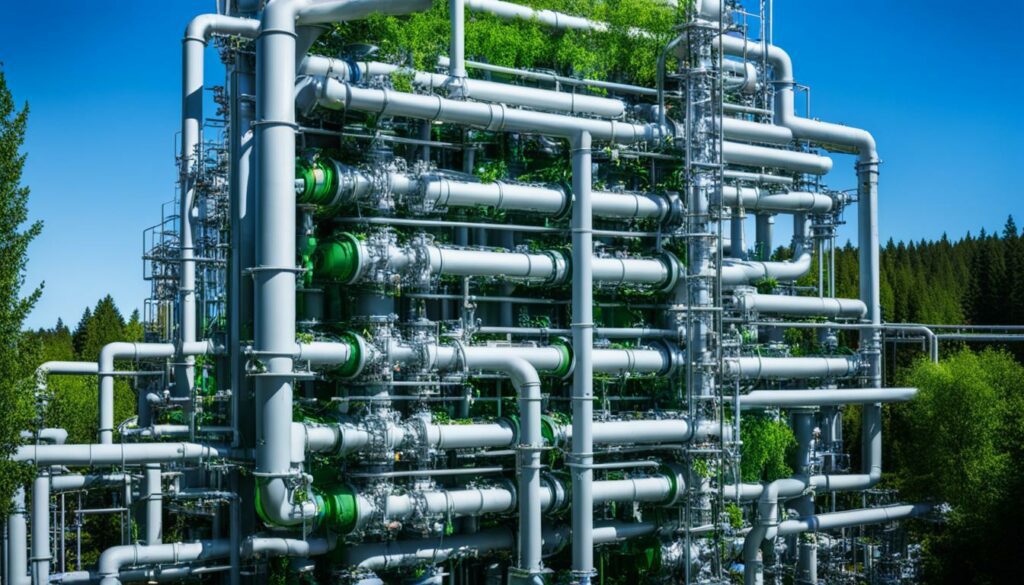
In 2022, the programme’s focus broadened to include carbon transport. The goal is to set up a strong industry for moving and storing carbon, which is crucial for cutting down industry emissions. To reach big climate goals, we need to build a strong storage network, keep making technology better with research, work with schools, and help industry experts.
The U.S. Department of Energy is working in three main research areas: building places to store carbon, finding new ways to store it, and making a network to transport carbon. These efforts aim to bring new, effective carbon capture and storage ideas into real life.
By the next year, the FECM/NETL Carbon Management Research Project Review will talk about several important areas. It will cover things like taking carbon from the start, taking carbon dioxide out of the air, changing carbon into useful things, and moving and storing carbon. The FECM also made tools like the Carbon Matchmaker and Diagram to help start new projects in carbon management.
The NETL is also offering money for projects that help with moving and storing carbon. Their Carbon Transport and Storage Programme supports many projects. All these activities add to a big global database about carbon capture and storage. This database helps everyone learn more about CCUS.
| Year | Milestone | Focus Area |
|---|---|---|
| 1997 | Carbon Storage Program Inception | CCUS Technologies |
| 2022 | Expansion to Carbon Transport | Transport & Storage Industry |
| 2023 | FECM/NETL Review | Carbon Management Projects |
By 2050, we aim to remove a lot of CO2 from the air. The hope is to use new technology and make helpful products from CO2. This work supports the goal of providing cheap energy while cutting industry pollution.
Emissions tracking platforms are changing how we keep an eye on greenhouse gas outputs. They make tracking emissions more accurate and efficient.
These platforms are great at giving precise and detailed carbon emissions data. This is all thanks to advanced data analytics. They help make sure every CO2 kilogram is tracked well. This boosts carbon management compliance and promotes good practices in monitoring emissions.
Using automated processes and making carbon data visible can cut emissions by 70%. Just showing emission data cuts them by 40%. With businesses worldwide aiming for bold climate targets, these tech benefits are huge.
Meeting environmental laws is key, and these tracking platforms really help. In the EU, the Corporate Sustainability Reporting Directive (CSRD) makes 50,000 companies report their climate and eco impacts. They need solid, checkable data, which these platforms provide.
The Greenhouse Gas Protocol Corporate Standard is the norm for 85% of firms that report to CDP. It shows how strict the standards are now, thanks to these tools. Plus, these tools can save a lot of money through reduced emissions. Expectations are, carbon costs could jump to $120 a tonne soon. Staying compliant means avoiding big fines and helping cut emissions globally.
| Company | Annual Carbon Emissions (tonnes) | Cost of Offsetting ($) |
|---|---|---|
| Smaller Fashion Company | 7,000 | $1 million |
| GANNI | -44% emissions | Target: -45% by 2025 |
To wrap it all up, using emissions tracking platforms means more accurate tracking and compliance. It also pushes for major emissions reductions in many sectors.
Today, using greenhouse gas management software is key for firms looking to control their carbon output. This tech helps track, analyse, and report emissions. It makes data clearer and aids in following rules. Recently, lots of businesses have switched from manual calculations to digital tools because of tighter laws. This shows the growing need for this kind of software in managing our emissions well.
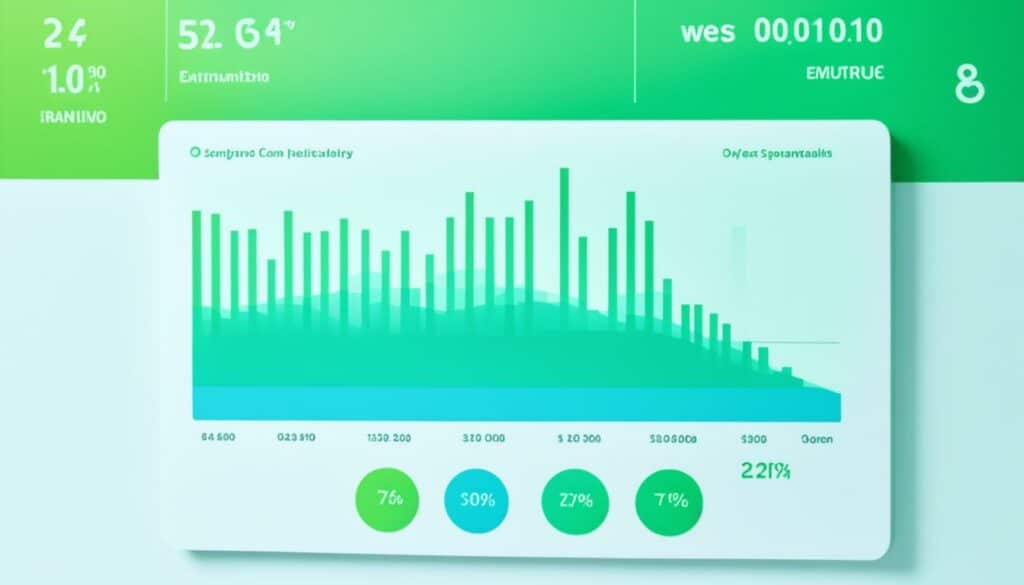
The top features of greenhouse gas management software include emissions monitoring tools that meet different industry standards. When choosing software, look for:
These aspects help the software handle many emission types. This makes it easier to fit into a firm’s way of working. So, firms can better meet their decarbonisation goals and Science-based Targets (SBTi).
To make greenhouse gas management software work well, it needs a strategic plan that matches a company’s processes. This plan should include staff training, keeping the system up to date, and working closely with the software’s creators for custom help. A smooth fit with carbon management means a firm can watch emissions closely as the EPA explains. Also, firms that use this kind of software are better at managing data, telling the public information, and checking their supply chains.
| Vendor | Key Features |
|---|---|
| Persefoni | Comprehensive carbon accounting, industry partnerships |
| Microsoft Sustainability Cloud | Advanced analytics, seamless integration |
| Net Zero Cloud by Salesforce | Unified auditing, personalised support |
| IBM Environmental Intelligence Suite | Robust industry experience, extensive reporting tools |
| Sphera | Emission monitoring, compliance management |
| Sinai Technologies | Market analysis, carbon conversion solutions |
| Emitwise | Operational transparency, decarbonisation strategies |
| Greenly | Data integration, support services |
Carbon offsetting applications help businesses lessen their environmental impact. They do this by investing in programmes that reduce carbon emissions. This approach allows companies to buy carbon credits to balance their emissions. The credits stand for real reductions in emissions, giving businesses a way to compensate for their carbon footprint.
The carbon credit markets have many options for companies. Businesses can take part in various projects that offset carbon. By investing, they support initiatives like protecting forests and creating renewable energy. Each project guarantees that for every tonne of carbon offset, one less tonne of carbon dioxide is in the air. These carbon credits meet strict standards, proving authentic emission reductions.
Using carbon offsetting in real life shows its positive effects. Projects include planting trees and reducing household emissions. They have supported over 600 projects in 56 countries. These efforts are key for businesses to become carbon neutral. Achieving this goal involves multiple steps and partnerships. It also supports the UN’s Sustainable Development Goals, proving the value of well-organised carbon offsetting.
In today’s world, moving towards green energy is key. We do this by using sources like the sun and wind more. At the same time, we try to use less energy. This way, we cut down on harmful gases and change how we use energy in different areas.
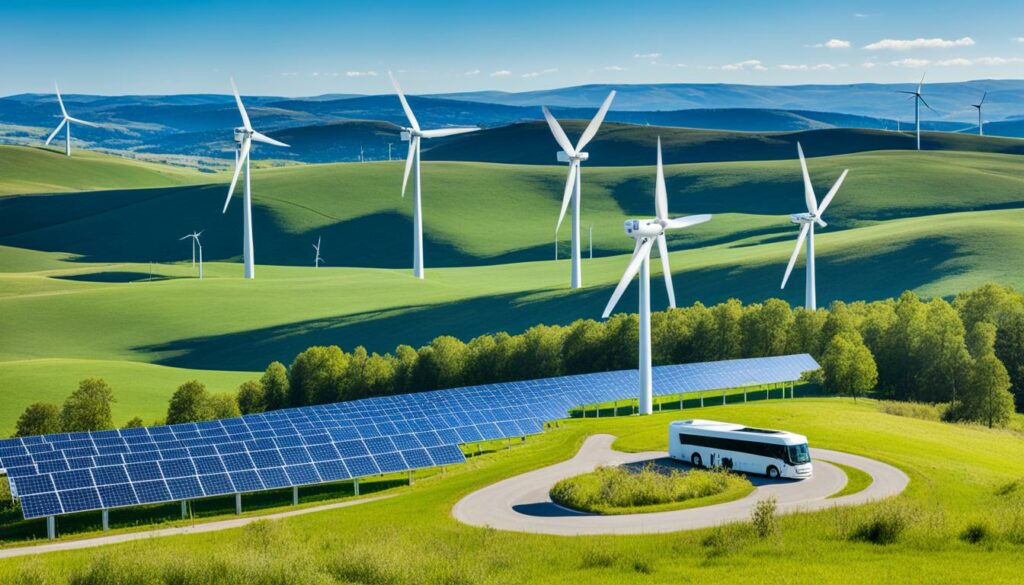
Using renewable energy helps us depend less on things like oil. Power from the sun, wind, and water causes much less harm to our planet. The government is putting a lot of money, $7 billion to be exact, into making green energy easier to use. This means big projects are happening to make switching to green power simple and doable for everyone.
It’s also important to use energy more wisely in buildings and factories. New tech that uses energy better is helping a lot. This not only cuts down on how much energy we need but also makes green energy work better. By being smarter about our energy use in places where things are made, we’re getting closer to having lots of clean power.
All these steps are crucial for a greener and more efficient future. By working on both using cleaner power and smarter energy use, we can make a real difference. This helps in making sure our planet and how we get energy are sustainable for the long haul.
The world of environmental sustainability is changing. Next-generation tools are making big changes. They are focusing on carbon management and helping us adapt to climate change. The Carbon Management Technologies Program is a key player. It’s working on how to capture, remove, and store CO2. The goal is to remove a massive amount of CO2 by 2050. This is vital for our planet’s health.
There’s more to these tools than just taking in carbon. They also turn it into useful, green products. The aim is to store CO2 in a way that’s safe, cheap, and lasts long. This deals with a major issue in managing carbon. The program is also looking into hydrogen tech that’s kinder to the environment. This tech helps make clean energy and boosts how efficiently power is produced. All of this is aiming for a future where we’ve cut our carbon footprint a lot.
Many advances have made these projects more affordable. They offer better ways to do things that save money and energy. This approach also helps create new jobs in places that used to depend on traditional fuels. The United States plans to cut its greenhouse gas emissions a lot by 2030. This shows the pressing need for these new sustainability tools.
Last year, the National Energy Technology Laboratory launched some impactful projects. They worked on lowering carbon emissions in many industries. These efforts included important events, like hosting a meeting to review carbon management projects. They also teamed up with companies to reduce CO2 from the air and store it. NETL also updated the CO2 Transport Cost Model. This model helps work out the expenses of moving CO2 by pipe. It’s a key part of taking care of carbon in a big way.
| Key Initiatives | Details |
|---|---|
| Carbon Capture & Storage (CCS) | Advancing technologies for point-source carbon capture and reliable storage. |
| CO2 Removal | Support for gigaton-scale CO2 removal by 2050 through diverse approaches. |
| Carbon Conversion | Developing methods to convert CO2 into valuable products. |
| Low-Carbon Hydrogen | Exploring hydrogen technologies for clean energy production. |
| Research & Development | Efforts leading to reductions in capital and operating costs. |
| Direct Air Capture (DAC) | Projects supported in California and Alabama. |
| CO2 Transport Cost Model | Updated model to calculate the cost of CO2 transportation by pipeline. |
With the climate crisis getting worse, organisations need ways to stick to climate policies and cut down on carbon. They’re turning to advanced mitigation software. This software helps businesses follow complex rules while keeping an eye on how well they are managing their carbon emissions.

Everywhere, from the EU to the U.S., reporting carbon emissions is now required. Mitigation software is key in this. It makes sure data is collected and reported accurately, meeting both local and global standards. This includes standards from the ISO14064 to the GHG Protocol, covering gases like methane and nitrous oxide.
Managing carbon well is as much about getting better constantly as it is about following rules. Mitigation software gives businesses detailed metrics. This helps in setting and checking Science-based Targets for lowering carbon emissions. The software helps companies show how much carbon they produce, making everything more transparent and leading to better decisions.
Now, more than ever, systems that can give out accurate emission data are needed. Companies that use state-of-the-art carbon management tools like the IBM Environmental Intelligence Suite see a few benefits. They include smoother work operations and better ways to stick to the rules, all of which help work towards a greener future.
Today, businesses are quickly including carbon footprint reduction systems into their plans for corporate sustainability. It’s because companies must act on their climate impact. Thanks to these systems, carbon reduction is measured and tracked well.
In the United States, over 5,000 miles of CO2 transport pipelines are in use. They handle nearly 70 million metric tonnes of CO2 each year. Regulations by the U.S. Environmental Protection Agency ensure the safe injection and storage of CO2 underground through the UIC Class VI program. This makes corporations confident in using these advanced methods.
Companies find these systems fit well with their plans for corporate sustainability. The successful record of carbon capture in the U.S. and strong laws make these systems trustworthy. This encourages more businesses to adopt them.
One big plus of carbon systems is the safe storage of CO2 in the U.S. This secure storage helps in aiming for global net-zero emissions by the early 2050s. These technologies are key in cutting down large amounts of emissions.
By using systems like electrification and renewables, companies can slash their greenhouse gas emissions by a lot. For example, such methods could cover over 70% of the reductions needed to reach global net zero by 2050. This shows real progress, proving companies take sustainability and the environment seriously.
By making carbon systems part of their daily operations, businesses fulfil current rules and help the future. The clear benefits of these systems show they are essential for up-to-date carbon management. They are clearly vital in corporate strategies.
The upcoming Carbon Management Technology Showcase (CMTS) will take place on August 28-30. It will be held at the David L. Lawrence Convention Center in Pittsburgh, PA. This event brings together people who are working on new ways to manage carbon. These include developers, investors, and others interested in these solutions.
Over 150 projects sponsored by the Department of Energy will be featured. These come from the Office of Fossil Energy & Carbon Management R&D programs. The event will highlight the latest technologies that help cut down on carbon emissions. This research will be reviewed during the 2023 FECM / NETL Carbon Management Research Project Review Meeting.
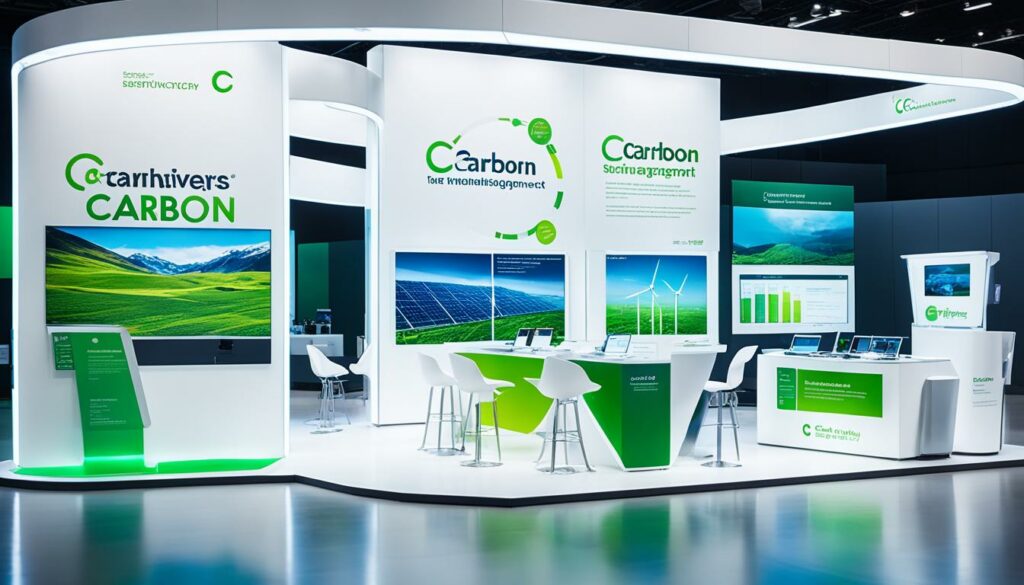
One significant part of CMTS will be seeing the many carbon management solutions available. From big companies to small startups, you’ll find a wide range of tech and ideas. National labs and top research institutions will also be there.
The goal of CMTS is to push forward with carbon management. It aims to bring together various solutions to cut down on emissions. The event will highlight solutions from around the globe, offering a broad view. Many top organisations are joining in. This event will likely change how we view and use carbon management technology in the future.
Investigating and developing carbon management is crucial for a zero-carbon future. By pushing ahead with new ways to manage carbon, we can tackle climate change and aim for a greener world.
Projects supported by governments, like those at NETL’s Carbon Management Technologies Program, are key. They help with capturing carbon, withdrawing CO2, making it into useful things, and storing it safely. These efforts boost our technology, create jobs, and focus on reducing carbon deeply and advancing the clean energy sector. They are especially important for helping areas with fewer opportunities.
| Technology | Application |
|---|---|
| Carbon capture from power generation and industrial sources | Reducing carbon emissions from major emitters |
| CO2 removal from the atmosphere | Direct air capture (DAC) systems |
| CO2 conversion into valuable products | Creating fuels, building materials, and more |
| Safe CO2 storage | Long-term underground sequestration |
Working together is vital in carbon management. The Illinois Basin-Decatur project, for example, shows what we can do together. It has stored about 1 million tons of CO2, making a big difference. And there are also efforts to make industries like cement, steel, and paper more eco-friendly.
By encouraging these team efforts and boosting research and development, we are laying the foundation for a greener carbon management world. This will not only help the planet but also improve local areas.
The need for ways to capture and use carbon is growing worldwide. Startups are leading the charge. They’re finding new ways to reduce carbon in the air. This is helping the move to a cleaner, low-carbon world.
Carbon Clean Solutions is doing great work in this area. They’ve made a special type of technology to catch CO2 at the source. This makes it cheaper and more efficient. It’s changing how industries handle their carbon.
Climeworks is another standout. They’re using technology to pull CO2 out of the air. This Swiss company is leading the world in this. Their work is making a real difference for our future.

In the USA, CarbonCure is transforming the concrete industry. They add CO2 to the concrete mix. This not only cuts the carbon footprint but makes the concrete stronger. They’re a big name in green building solutions.
LanzaTech is turning waste gas into something useful: ethanol. Their method is smart and eco-friendly. It shows a great path for managing carbon better.
We need strong policies to help these startups grow. Things like the 45Q tax credit are important for their success. We should also focus on training workers and helping communities. This will make their technologies more common and effective.
In the end, backing these new businesses and creating solid policies is vital. It gets us closer to our climate goals. These startups are leads in making a cleaner, better world for all.
Carbon management is vital in our fight against climate change. The NETL has started a big program to make power generation more efficient and to improve hydrogen technologies. They’re working on capturing carbon from sources, removing CO2, and turning it into useful items.
They’re also pushing for ‘green’ supply chains in key sectors like cement and steel. By doing this, pollution from fossil fuels can be greatly reduced. The Carbon Capture Coalition is helping by promoting these efforts in the government.
The program’s key goals are to capture carbon and store it safely, and to turn CO2 into products. There’s a big goal to remove a lot of CO2 by 2050. This would not only help the planet but also create business opportunities.
They’re also working on hydrogen with these carbon-cutting strategies. Their end goal is to have energy systems that don’t add more carbon to the atmosphere. This shows how important it is to be creative in solving climate problems.
The I3 initiative is trying to speed up the use of these ‘green’ technologies. It’s doing this by working with the government at different levels. They’re also reaching out to the public, using tools to explain the tech and involve more people.
“Integrating Industrial Carbon Management (ICM) technologies into broader greenhouse gas mitigation strategies ensures a cost-effective pathway to stabilize atmospheric CO2 concentrations, transforming the future of fossil-based global economies.”
ICM looks to use energy without adding carbon to the air, through processes such as coal gasification. It offers hope for more sustainable practices. But, these solutions can be expensive and have big impacts on the environment. So, we need to be careful.
Developing new ways to handle carbon is not just about new tech. It’s about bringing together governments, industries, and people. The Carbon Action Alliance is leading by example. It’s a chance to see real change towards a greener future.
| Programme Focus Areas | Goals |
|---|---|
| Point Source Carbon Capture | Mitigate emissions from power generation and industrial sources |
| CO2 Removal | Support gigaton-scale removal by 2050 |
| CO2 Conversion | Transform CO2 into valuable products |
| Permanent CO2 Storage | Develop safe, low-cost storage solutions |
| Hydrogen Technologies | Achieve carbon-neutral or net-negative energy systems |
Looking at carbon management technologies shows that we need strong plans to tackle climate issues. The European Union wants to cut emissions significantly by 2030, then go entirely net-zero by 2050. A big step is to cut emissions by 90% before 2040, showing how urgent this is.
The industry causes about one-fifth of the EU’s emissions, making it key to change. To hit future goals, the EU might need to take out up to 400 million tons of CO2 each year by 2040. Figures suggest starting with 50 million tons by 2030, aiming for 280 million by 2040, and 450 million by 2050. Most of the CO2 captured will come from industry at first, then from natural sources more later.
States like Louisiana and Oklahoma in the US can lead in carbon tech because they have big industrial emissions. Laws supported by Senator Ben Ray Luján and the CATCH Act will help by boosting credit values and starting projects early. Getting communities involved and teaching the public is crucial for making these plans work. The CO2NNECT Virtual Series gathers experts to share ideas, moving us closer to a clean, zero-carbon future.
The Carbon Management Technology Showcase (CMTS) is a new event. It’s happening from August 28-30 in Pittsburgh, Pennsylvania. Organised by the United States Energy Association (USEA), it brings together people involved in carbon management. They include developers, investors, and practitioners.
The CMTS will show the latest in capturing carbon, removing carbon dioxide, and converting carbon. Projects from the Department of Energy will share insights. Technologies like capturing carbon from points, and from the air, will be on display.
The CMTS will have notable exhibitors like Apollodyne and Mojonnier. Also, the University of North Dakota’s Energy and Environmental Research Center will attend. The event features everyone from solo entrepreneurs to big multinationals.
The NCCC, run by Southern Company, is crucial for carbon capture research. It’s the Department of Energy’s key place for testing carbon capture technologies. The centre has tested over 80 technologies and works with organisations like Chevron and UCLA on cutting-edge research.
Point source capture technologies are improving a lot. The NCCC is looking at new tech for natural gas plants and industries. This work helps reduce greenhouse gases and find new uses for captured carbon. The industry is making strides with tests and partnerships.
There are two main ways to remove carbon dioxide. Biological ways are natural, like plants using photosynthesis. Chemical ways involve using materials to soak up or react with CO2 in exhausts of big industrial sites.
Carbon conversion turns CO2 from waste into useful things. This includes products like building materials and fuels. It’s good for the economy and the environment, offering businesses a win-win solution.
Innovations in transporting and storing carbon matter a lot. They provide a safe way to keep captured CO2 for a long time. This is key for reducing industrial carbon emissions effectively.
Emissions trackers make checking and reporting emissions much better. They help meet rules by providing digital ways to track and report on carbon use. This makes a company’s environmental actions clear and proven.
Greenhouse gas software helps track and report on a company’s carbon emissions. It ensures that the company meets eco-standards. Plus, it fits smoothly into how a company already runs its business.
Carbon offsetting apps give companies ways to balance their carbon use. They offer projects like tree planting and green energy. This helps companies reach their eco-goals.
Sustainable energy helps cut down on gas emissions. It uses renewable energy and makes energy use more efficient. This is good for the environment and helps companies be more eco-friendly.
Next-gen sustainability tools are for managing and adapting to climate change. They focus on lowering emissions now and planning for the future. They offer smart strategies for dealing with carbon.
Mitigation software helps companies follow rules and measure their eco-performance. It supports getting better over time by tracking and managing their carbon use. This is essential as eco-laws get stricter.
Reducing carbon footprints shows that a company cares for the planet. It proves their dedication to eco-sustainable business. This is increasingly crucial for both staying profitable and being eco-friendly.